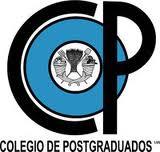Resource information
La presente investigación tuvo por objeto analizar la organización social que existe en San Juan Evangelista Analco, Oaxaca para el manejo forestal comunitario. La compilación de datos se hizo mediante el uso de la “técnica etnográfica”, lo que hizo necesario aplicar técnicas de investigación de campo de tipo cualitativo, como la de “observación participante”, “genealogías” y “entrevistas”. Los resultados reflejaron que en la comunidad existe una organización comunitaria para la administración de los bosques basada en el capital social, que recae en el Comisariado de Bienes Comunales. Éste es el responsable directo del uso y manejo del recurso, bajo la dirección de la asamblea comunal, la que regula las acciones de esta asociación. Además del trabajo que realiza el Comisariado se encontraron otros factores que inciden en el manejo comunitario, como los usos del bosque, la emigración, la participación de instancias gubernamentales y privadas, la experiencia de comunidades vecinas en el aprovechamiento forestal, las características naturales del área boscosa, la distancia del bosque a la comunidad y el área reducida de la masa forestal (706.7 ha). Se concluyó que las estrategias de organización social comunitaria están diseñadas e implementadas para la protección del bosque y el aprovechamiento doméstico. El esquema de organización de la comunidad para el uso del bosque es parcialmente sustentable, permitiendo la conservación de éste sin afectar ostensiblemente su productividad, debido a que los montos de extracción maderable del bosque no se han distribuido de manera regular en toda la superficie arbolada.________The present research had the aim of analyzing the existing social organization in San Juan Evangelista Analco, Oaxaca, for the communal forest management. Data compilation was done using the “ethnographic technique”, which made it necessary to apply qualitative field research techniques such as “participating observation”, “genealogies”, and “surveys”. The results showed that in the community there is a community organization for the administration of the forests, based on social capital, which falls on the Commissary of Communal Goods. This Commissary is the direct responsible for the use of the resource, under the direction of the community assembly, which regulates the actions of the association. Besides the work carried out by the Commissary, there were other factors that affect community management, such as the uses of the forest, emigration, the participation of government and private parties, the experience of neighboring communities in forest management, the natural characteristics of the wooded area, the distance from the forest to the community, and the reduced area of woodland (706.7 ha). The conclusion was that the community social organization strategies are designed and implemented for the protection of the forest, and household use. The organization scheme of the community for the use of the forest is partially sustainable, allowing for the forest’s conservation without visibly affecting its productivity, since the volume of wood extraction from the forest has not been distributed regularly throughout the whole forested surface.


